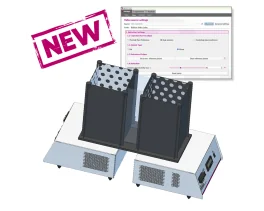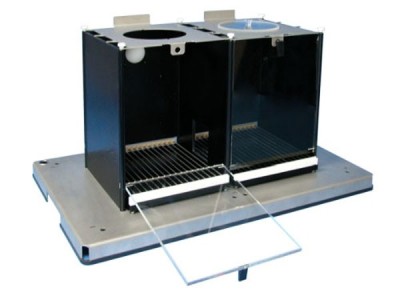Authors
Bentefour Y, Bennis M, Garcia R, m'hamed SB
Lab
Cadi Ayyad Université, Marrakech, Maroco
Journal
Psychopharmacology (Berl).
Abstract
RATIONALE:
After exposure to a severe traumatic event, avoidance, fear sensitization, and increased anxiety are among features that can persist over time in people developing posttraumatic stress disorder (PTSD). Basic research on treatment interfering with these symptoms can provide insights to improve PTSD treatment.
OBJECTIVES:
The purposes of the present study were to induce these behavioral changes in mice and examine whether paroxetine would interfere with their expression.
METHODS:
Mice were submitted to avoidance training with a low (0.4 mA) or high (1.5 mA) foot-shock intensity, as mild and severe stressors, respectively, and posttraining avoidance was evaluated 1 and 12 days later. Fear sensitization, measured as increased freezing to a neutral tone, and enhanced contextual fear, measured as increased freezing to a conditioned context (wherein all mice received a 0.4-mA foot-shock), were assessed during this time window. An elevated plus maze test was also used to assess mouse anxiety-like behavior.
RESULTS:
Persistent avoidance, persistent fear sensitization, and long-term enhancement of contextual fear and increased anxiety-like behavior were established only in mice that received the 1.5-mA foot-shock during avoidance training. Paroxetine (at 8 mg/kg/day), injected from day 5 to day 11 after avoidance training, suppressed all of these behavioral changes.
CONCLUSIONS:
These data provide additional evidence for the role of paroxetine against expression of PTSD-like behaviors in mice.
BIOSEB Instruments Used
Shuttle Boxes (LE916)
Source :

 Pain - Thermal Allodynia / Hyperalgesia
Pain - Thermal Allodynia / Hyperalgesia Pain - Spontaneous Pain - Postural Deficit
Pain - Spontaneous Pain - Postural Deficit Pain - Mechanical Allodynia / Hyperalgesia
Pain - Mechanical Allodynia / Hyperalgesia Learning/Memory - Attention - Addiction
Learning/Memory - Attention - Addiction Physiology & Respiratory Research
Physiology & Respiratory Research











![Dynamic Weight Bearing 2.0 – Postural Module [Add-on]](https://bioseb.com/733-home_default/dynamic-weight-bearing-20-add-on-postural-module.jpg)
























 Pain
Pain Central Nervous System (CNS)
Central Nervous System (CNS) Neurodegeneration
Neurodegeneration Sensory system
Sensory system Motor control
Motor control Mood Disorders
Mood Disorders Other disorders
Other disorders Muscular system
Muscular system Joints
Joints Metabolism
Metabolism Cross-disciplinary subjects
Cross-disciplinary subjects CONFERENCES & MEETINGS
CONFERENCES & MEETINGS 